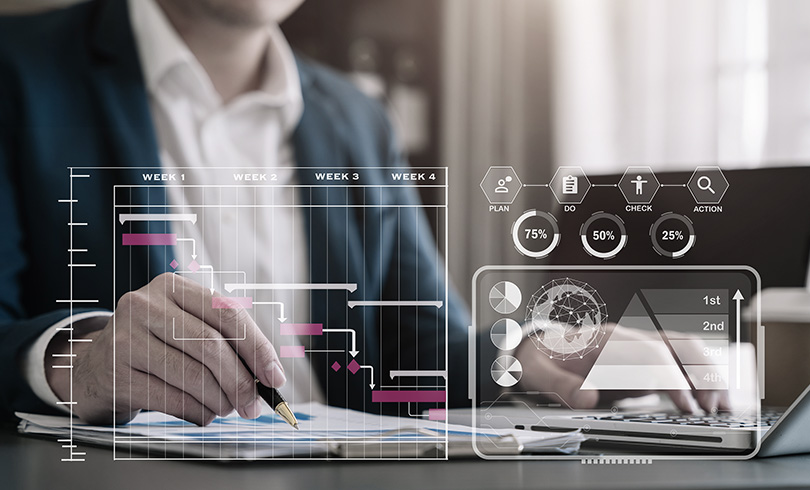Global e-invoicing requirements: Will SA follow suit?
-
05 Apr, 2024
-
3 min read

While many businesses are beginning to discover e-invoicing and its benefits, its origins are not exactly brand new. In fact, the first, original e-invoices were sent using electronic data interchange (EDI) by the Holland-America Line using telex in 1965.
Since then, the global e-invoicing landscape has undergone significant changes, mostly in regards to VAT modernisation, with each country introducing and implementing new reporting models at its own pace. However, in today's tech-driven world, e-invoicing is experiencing significant global expansion and rapid adoption, and businesses (and regulatory bodies) are forced to play catch-up.
Examples of this can be seen worldwide, as tax authorities have introduced and implemented innovative models for tax digitalisation, all in an attempt to simplify payments and increase transparency within the tax landscape - and South Africa is no different.
SARS VAT modernisation
In September 2023, South African Revenue Services (SARS) published a paper announcing its plans to modernise South Africa's VAT reporting framework. The plans for VAT modernisation in South Africa come after the framework has remained essentially unchanged with little modernisation since its introduction in 1991. To streamline the VAT return process and reduce the potential VAT reporting gap, SARS is investigating a phased approach for rolling out mandatory e-invoicing.
Understanding the complexity of e-invoicing frameworks
Introducing and implementing e-invoicing is a complex process that requires considering multiple economic and socio-economic factors. Due to this, numerous frameworks and models are in place across different regions. The most common models in use across the world include the following:
Interoperability
This involves exchanging and processing e-invoices across different formats and standards, ensuring that buyers' and sellers' systems can understand and process e-invoices accurately, regardless of the software they use. It also allows for a standardised exchange of invoice data between businesses, suppliers, and government tax authorities. PEPPOL is an example of an interoperable exchange via a network of certified vendors.
Real-time reporting
Real-time reporting generates and transmits invoice data instantaneously as transactions occur (or soon after). Instead of waiting for periodic batch processing, it enables the immediate transmission of invoice information to tax authorities or relevant regulatory bodies as soon as an invoice is issued or received.
Clearance
The clearance model can be further categorised into pre-clearance and post-clearance. Under preclearance models, invoices must be sent to the tax authorities before they can be sent to the buyer. Under the post-clearance models, the invoices can be sent to the buyer first and then sent to the tax authority for clearance.
What has SARS learnt from international models?
According to SARS, the upcoming South African VAT modernisation requirements draw on research from electronic invoicing introduction and implementation in 11 countries.
After reviewing the various e-invoicing mandates and legislative proposals worldwide, SARS appears to be prioritising the need for real-time reporting, which means that businesses will likely require systems that facilitate the preparation and distribution of e-invoices and the transmission of all e-invoice data to SARS regularly in SARS's desired format. Simply put, the end goal is for SARS to digitally receive real-time VAT data, enabling businesses' VAT reporting to become more automated, streamlined and accurate.
Fortunately, if you're a System1A client, you don't have to worry about the prep work. In fact, you can tap right into the benefits and competitive advantage that e-invoicing has to offer. System1A is a tried and tested South African e-invoicing provider with years of experience in EDI security, e-invoice distribution, and tracking.
<<GET STARTED>>
Since then, the global e-invoicing landscape has undergone significant changes, mostly in regards to VAT modernisation, with each country introducing and implementing new reporting models at its own pace. However, in today's tech-driven world, e-invoicing is experiencing significant global expansion and rapid adoption, and businesses (and regulatory bodies) are forced to play catch-up.
Examples of this can be seen worldwide, as tax authorities have introduced and implemented innovative models for tax digitalisation, all in an attempt to simplify payments and increase transparency within the tax landscape - and South Africa is no different.
SARS VAT modernisation
In September 2023, South African Revenue Services (SARS) published a paper announcing its plans to modernise South Africa's VAT reporting framework. The plans for VAT modernisation in South Africa come after the framework has remained essentially unchanged with little modernisation since its introduction in 1991. To streamline the VAT return process and reduce the potential VAT reporting gap, SARS is investigating a phased approach for rolling out mandatory e-invoicing.
Understanding the complexity of e-invoicing frameworks
Introducing and implementing e-invoicing is a complex process that requires considering multiple economic and socio-economic factors. Due to this, numerous frameworks and models are in place across different regions. The most common models in use across the world include the following:
Interoperability
This involves exchanging and processing e-invoices across different formats and standards, ensuring that buyers' and sellers' systems can understand and process e-invoices accurately, regardless of the software they use. It also allows for a standardised exchange of invoice data between businesses, suppliers, and government tax authorities. PEPPOL is an example of an interoperable exchange via a network of certified vendors.
Real-time reporting
Real-time reporting generates and transmits invoice data instantaneously as transactions occur (or soon after). Instead of waiting for periodic batch processing, it enables the immediate transmission of invoice information to tax authorities or relevant regulatory bodies as soon as an invoice is issued or received.
Clearance
The clearance model can be further categorised into pre-clearance and post-clearance. Under preclearance models, invoices must be sent to the tax authorities before they can be sent to the buyer. Under the post-clearance models, the invoices can be sent to the buyer first and then sent to the tax authority for clearance.
What has SARS learnt from international models?
According to SARS, the upcoming South African VAT modernisation requirements draw on research from electronic invoicing introduction and implementation in 11 countries.
After reviewing the various e-invoicing mandates and legislative proposals worldwide, SARS appears to be prioritising the need for real-time reporting, which means that businesses will likely require systems that facilitate the preparation and distribution of e-invoices and the transmission of all e-invoice data to SARS regularly in SARS's desired format. Simply put, the end goal is for SARS to digitally receive real-time VAT data, enabling businesses' VAT reporting to become more automated, streamlined and accurate.
Fortunately, if you're a System1A client, you don't have to worry about the prep work. In fact, you can tap right into the benefits and competitive advantage that e-invoicing has to offer. System1A is a tried and tested South African e-invoicing provider with years of experience in EDI security, e-invoice distribution, and tracking.
<<GET STARTED>>
Related insights






